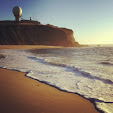 As I read chapter one of "Rethinking High School" one thing that continually resonated with me was the idea of learning by doing. I think that hands on is the best practice, that doing is knowing (or at least closer to it). By allowing students to engage in real world tasks we help them to truly invest in their learning and experience their newly acquired knowledge through usage. Furthermore, when students are actively involved in "doing" larger scale projects they are more likely to be taking on multiple disciplines of study. For example, a census project could provide students opportunities to work collaboratively to collect information, to synthesize the results using mathematics, and to write about how their results relate to specific elements of their social science and language arts studies. Most importantly the students task would require them to go outside of the comfort and safety of a tablet arm chair desk in a polygonal room and interact with the communities and the world around them at large. Doing could mean that they are on a computer in the classroom or a resource room creating an artistic and visually pleasing form for presenting their findings. As long as students seek answers by thinking critically to solve problems and create unique and personal products we will know they are learning. In this way our assessments also become more valid, especially if the previous assessments were multiple guess. Learning by doing creates able and confident citizens who, even during their most fresh and naive step into the adult world, will have experience to lean on.
As I read chapter one of "Rethinking High School" one thing that continually resonated with me was the idea of learning by doing. I think that hands on is the best practice, that doing is knowing (or at least closer to it). By allowing students to engage in real world tasks we help them to truly invest in their learning and experience their newly acquired knowledge through usage. Furthermore, when students are actively involved in "doing" larger scale projects they are more likely to be taking on multiple disciplines of study. For example, a census project could provide students opportunities to work collaboratively to collect information, to synthesize the results using mathematics, and to write about how their results relate to specific elements of their social science and language arts studies. Most importantly the students task would require them to go outside of the comfort and safety of a tablet arm chair desk in a polygonal room and interact with the communities and the world around them at large. Doing could mean that they are on a computer in the classroom or a resource room creating an artistic and visually pleasing form for presenting their findings. As long as students seek answers by thinking critically to solve problems and create unique and personal products we will know they are learning. In this way our assessments also become more valid, especially if the previous assessments were multiple guess. Learning by doing creates able and confident citizens who, even during their most fresh and naive step into the adult world, will have experience to lean on.Not that it's a horrible practice, but I found the part about the educators and creators of Best Practice High School reflecting on their own experience as parents a little short sided. The authors mention that the three of them took their experiences with their collective eight children and evaluated the feelings that they've experienced from their children. I think they came up with a good synopsis: "Some of our children were welcomed and reasonably well served by their schools, others had mixed or indifferent experiences, and some were ignored, misunderstood, or injured." The problem I have is that it is still merely a personal reflection. I think actually surveying students (anonymously) would render much more discrete understandings of how the students feel in their schools.
Second to?
Creating curricular paths to success was right down Best Practices High's alley. They both are concerned with constructing meaning rather than filling kids up with information and are more concerned with what students can actually do than how many of the correct bubbles they can find.
What about you Mr. Sullivan?
 I'm excited to work with my colleagues, especially from different disciplines, on creating tasks, assignments, and assessments that engage the students in two or more disciplines at a time. I think that with the help of technology we can tear down the walls that divide our disciplines and find ways to inculcate the skills we all posses into rich, rigorous, and stimulating activities for all of the teachers' students to experience and interact with, sans limitation.
I'm excited to work with my colleagues, especially from different disciplines, on creating tasks, assignments, and assessments that engage the students in two or more disciplines at a time. I think that with the help of technology we can tear down the walls that divide our disciplines and find ways to inculcate the skills we all posses into rich, rigorous, and stimulating activities for all of the teachers' students to experience and interact with, sans limitation.



